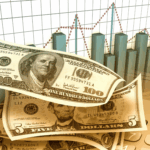Amidst a landscape marked by economic challenges, major U.S. retailers like Walmart, Target, Home Depot, and Lowe’s are set to release their quarterly earnings this week. These reports are crucial as they promise insights into how U.S. consumers navigate ongoing economic hurdles, such as tariffs and inflation, impacting their purchasing choices. For consumers, a balance between maintaining spending habits and adapting to rising costs due to tariff impacts remains a core concern.
Significant attention is directed towards the upcoming earnings releases. These reports will serve as indicators of how corporate profits are affected by the economic pressures that have become increasingly palpable among U.S. shoppers. Recently, data has highlighted a drop in consumer sentiment as inflationary concerns persist, illustrating a 5% decline in consumer confidence this August, marking the first decrease in the past four months.
What Will the Earnings Report Reveal?
The earnings reports from companies like Walmart and Target are expected to shed light on whether the increased costs due to tariffs are being absorbed by retailers or passed on to consumers. According to Keith Lerner, Co-Chief Investment Officer at Truist Advisory Services, understanding how companies handle profit margins amidst rising tariffs is a key question for Wall Street and investors.
“The question that Wall Street and investors are trying to figure out is: We see the tariff numbers going up, are they being passed through, or are the companies’ profit margins getting squeezed?” Lerner stated.
How Are Consumers Adapting to Economic Changes?
Among consumers, there has been a noticeable shift towards more cautious spending. Extensive research by PYMNTS Intelligence notes that nearly half of American shoppers have faced difficulties locating affordable everyday items, largely due to tariff-induced supply chain disruptions and consequent price hikes. Such challenges have fostered a shift in consumer habits, pushing many to compare prices among multiple retailers before making purchases.
In recent analyses, the reliance on promotions and discounts to boost retail sales has been evident, with many opting to forgo discretionary spending on electronics and home décor. The long-standing effects of the tariffs are nudging consumers towards adopting more cost-effective shopping habits, which may result in a weaker lifetime customer value for several brands owing to entrenched polite spending behavior.
The implications of these changes extend beyond immediate shopping decisions, prompting retailers to adjust strategies. The enduring concern is not just about the availability of the product but also about adapting to price sensitivities. Some experts suggest that, if not addressed, these difficulties may further establish economic uncertainty, urging brands to rethink their approach to consumer engagement and inventory management.
Observing these trends, analysts speculate that continual absence of essential items may encourage consumers to permanently associate regular shopping activities with unpredictability.
“Tariffs are no longer an abstract policy lever,” PYMNTS pointed out earlier this month, emphasizing the acute impact tariffs have during everyday transactions.
The unfolding economic conditions tied to tariffs and inflation are pivotal for retailers like Walmart and others in the sector. Understanding changing consumer behavior, triggered by economic uncertainties, is not just a short-term business challenge but has long-term implications for strategic planning within retail. Future success could rely heavily on leveraging data from current earnings alongside consumer responses to optimize product availability and pricing strategies.










